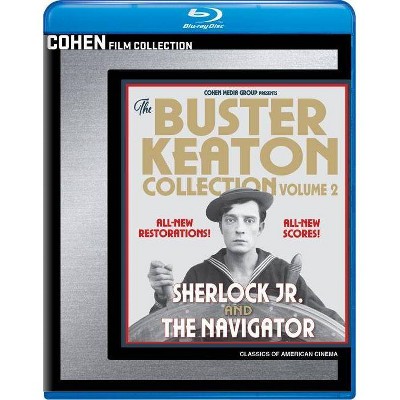The Theater and Cinema of Buster Keaton - by Robert Knopf (Paperback)

Similar Products
Products of same category from the store
AllProduct info
<p/><br></br><p><b> About the Book </b></p></br></br>An unprecedented look at the wide-ranging appeal of Keaton's genius, startingwith his early days in Vaudeville. 30 illustrations.<p/><br></br><p><b> Book Synopsis </b></p></br></br><p>Famous for their stunts, gags, and images, Buster Keaton's silent films have enticed everyone from Hollywood movie fans to the surrealists, such as Dalí and Buñuel. Here Robert Knopf offers an unprecedented look at the wide-ranging appeal of Keaton's genius, considering his vaudeville roots and his ability to integrate this aesthetic into the techniques of classical Hollywood cinema in the 1920s. When young Buster was being hurled about the stage by his comically irate father in the family's vaudeville act, The Three Keatons, he was perfecting his acrobatic skills, timing, visual humor, and trademark "stone face." As Knopf demonstrates, such theatrics would serve Keaton well as a film director and star. By isolating elements of vaudeville within works that have previously been considered "classical," Knopf reevaluates Keaton's films and how they function. <p/> The book combines vivid visual descriptions and illustrations that enable us to see Keaton at work staging his memorable images and gags, such as a three-story wall collapsing on him (<i>Steamboat Bill, Jr.</i>, 1928) and an avalanche of boulders chasing him down a mountainside (<i>Seven Chances</i>, 1925). Knopf explains how Keaton's stunts and gags served as fanciful departures from his films' storylines and how they nonetheless reinforced a strange sense of reality, that of a machine-like world with a mind of its own. In comparison to Chaplin and Lloyd, Keaton made more elaborate use of natural locations. The scene in <i>The Navigator, </i>for example<i>, </i> where Buster brandishes a swordfish to fend off another swordfish derives much of its power from actually being shot under water. Such "hyper-literalism" was but one element of Keaton's films that inspired the surrealists. <p/> Exploring Keaton's influence on Salvador Dalí, Luis Buñuel, Federico García Lorca, and Robert Desnos, Knopf suggests that Keaton's achievement extends beyond Hollywood into the avant-garde. The book concludes with an examination of Keaton's late-career performances in Gerald Potterton's <i>The Railrodder</i> and Samuel Beckett's <i>Film</i>, and locates his legacy in the work of Jackie Chan, Blue Man Group, and Bill Irwin.</p><p/><br></br><p><b> From the Back Cover </b></p></br></br><p>"<i>The Theater and Cinema of Buster Keaton</i> will be valued by anyone who wants to remain on top of contemporary scholarship about film comedy and will be treasured by the legion of film buffs who want to know more about the classics of slapstick."<b>--Henry Jenkins, Massachusetts Institute of Technology, author of <i>What Made Pistachio Nuts?: Early Sound Comedy and the Vaudeville Aesthetic</i></b></p><p>"This engaging book provides a fresh synthesis in its argument about why we should value Keaton's films."<b>--Charles J. Maland, University of Tennessee, author of <i>Chaplin and American Culture: The Evolution of a Star Image</i></b></p><p/><br></br><p><b> Review Quotes </b></p></br></br><br>The remarkable thing about Buster Keaton is that within the world of film he could do anything. [The book] is a concise synthesis of critical opinions on Keaton which is most useful and insightful in its attention to the tension between vaudeville-based gags and classical narrative structure in Keaton's films.<b>---Marc A. Mamigonian, <i>The Boston Book Review</i></b><br><br>Knopf offers a timely, academic appreciation of the great stoneface, examining why Keaton's films intrigued surrealists and intellectuals. . . . Knopf also does an excellent job of tracing the vaudevillian roots of Keaton's stunts and gags.-- "Library Journal"<br><br>With apt photographs, complete filmography, and heuristic bibliography, Knopf reanimates the delightfully improvised cinema of a truly great comic film artist.-- "Choice"<br><p/><br></br><p><b> About the Author </b></p></br></br><b>Robert Knopf</b> is Assistant Professor of Theater at the University of Michigan. With Bert Cardullo, he is the co-editor of <i>Theater of the Avant-Garde, 1890-1950</i> (forthcoming).
Price History
Price Archive shows prices from various stores, lets you see history and find the cheapest. There is no actual sale on the website. For all support, inquiry and suggestion messagescommunication@pricearchive.us




















